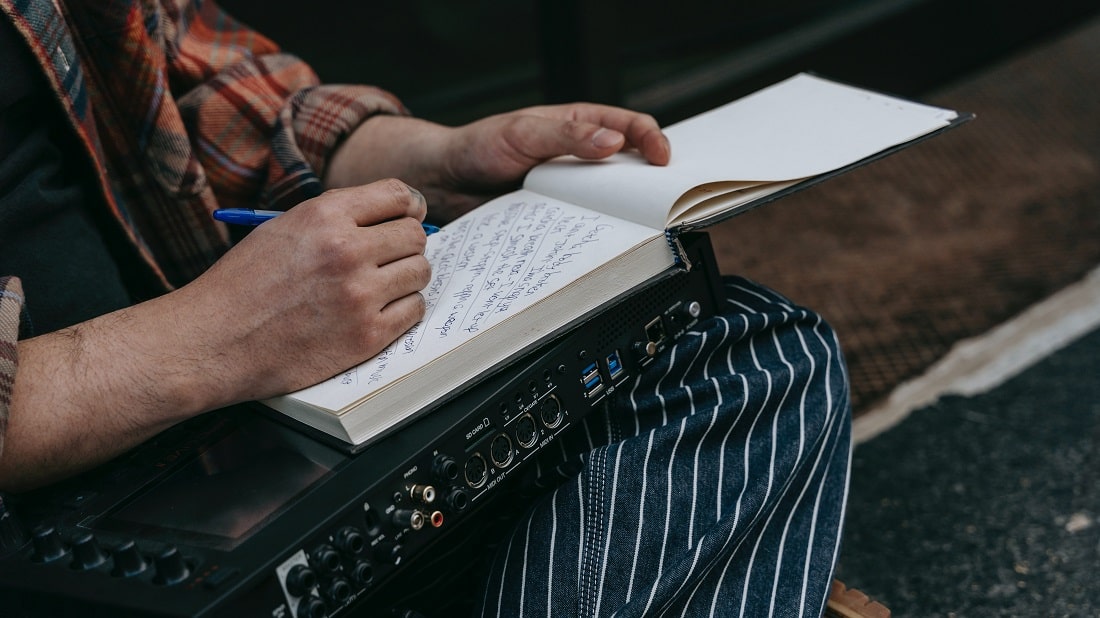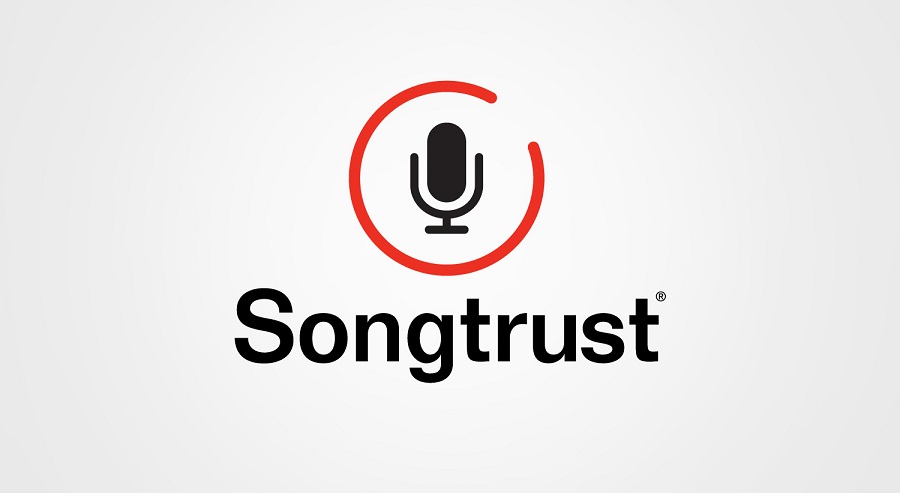Setlists are an integral part of any show, whether big or small.
Without them, artists and bands have no sense of what the performance is going to look like or how the audience is set to react.
Not only that, but did you know a setlist can become extremely valuable with time and may get auctioned later on?
Handwritten setlists by big, well-known performers, including Patti Smith and Janelle Monáe sell for hundreds, even thousands, of dollars!
Want to learn more?
In this article, we answer, in-depth, some questions such as what is a setlist, how to successfully write a good one, and why are they so important?
Let’s rock and roll!
What Is a Setlist?
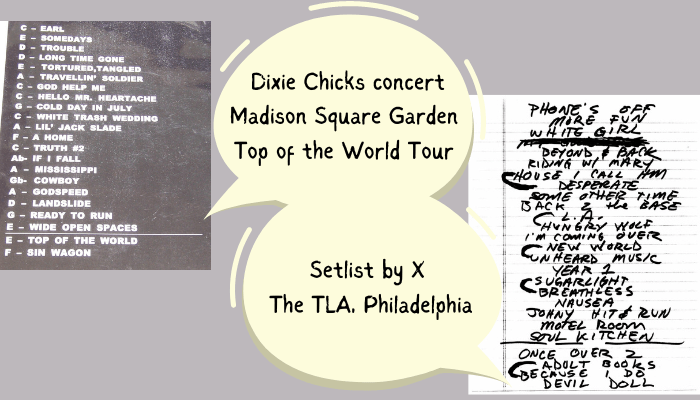
As the name suggests, a setlist is a shortlist made up of typically ten to 15 songs. It can be handwritten or digitally typed out, depending on the artist’s preference.
The main aim of a setlist is to give entertainers a sense of direction throughout the show.
It’s a fundamental part of any performance since it helps unify the whole set. Having a setlist means that every group member is following the same song.
Artists can choose to have their setlist on hand or hung where everyone can see it. It’s also easier to have it on certain equipment, such as a stage monitor or an amplifier.
What’s critical, in the end, is that if you’re working with a live band, you definitely need to prepare a setlist beforehand.
You need to make just as sure that each person on your team gets the right song list.
After all, the last thing you want is your drummer starting up a different tune than your guitarist.
With enough time to prepare before the show, the whole band can discuss which songs get to make it and the order in which you’ll play them.
So, with that in mind, our next section will show you the ideal way to write a setlist that works best for you as a performer but also guarantees your fanbase an incredible show!
How to Write a Setlist

Putting together a setlist can seem overwhelming since it acts as the foundation of your entire show.
There are many things a setlist should be and being well-organized is one of them.
The important thing to remember is that preparing a setlist is a team effort—even the marketing team plays a role in it.
They may not weigh on the songs’ order, but they can help direct the band on which tunes will liven up the audience or what plug-ins artists can make in-between.
That said, below we take you through our five tips that you should know before writing a setlist.
Stick To Your Given Time
Any venue you book gives you a specific opening that you need to abide by.
Small artists find it hard to get a gig in the first place, meaning, the last thing they need is to overrun their given time.
A setlist, though, is a great way to not have this happen.
For a short gig, for example, one that’s only 30 minutes, you may only need about six songs—provided that each track is about three minutes.
This does help give your band some time to both setup and pack before the next artist takes over.

Longer gigs, on the other hand, can last anywhere from an hour to three. As a result, you may end up adding 60 songs to your list.
You’ll find that you need to keep the energy up longer and interact with the audience more.
Some of these gigs are wedding ones where you should factor in dance and background music too.
In short, keep in mind how long your venue time is and the purpose of your event when writing your setlist.
Bangers Go First
As a rule of thumb, performances should start off with a song that pumps up the crowd.
The first song on your setlist makes up the mood for the rest of the event and it should always be a bang.
Not just that, but you need to consider people who are attending the show for the first time.
Those are the ones you should be mindful of leaving a lasting impression on if you want to pull in new fans.
Additionally, make sure that your beginning song fits well with the overall theme of your band.

For instance, rock and metal groups should begin with a cymbal wash. Co-ordinating the drums, guitar, and bassline will greatly kick off the beat.
Simply put, upcoming artists need to worry about stage presence and how they want to leave the audience feeling.
With smaller gigs especially, there’s little time to have the crowd wanting to hear more.
So, just remember, a lot depends on that first song. It should be a lyrical, musical, and emotional hit.
The Energy Curve Is Important
This step is crucial when you’re dealing with long shows that can go on for hours.
If you’ve been to such events then you’ve certainly taken note of how the crowd’s energy shifts throughout the whole performance.
That’s because a show is never linear in terms of energy. Any true artist who’s performed live knows that breaks are important and lulls can happen.
What’s important is that you have a setlist that can keep you afloat during those moments.
Take the middle of a performance, for example. That’s usually when the audience is restless.
They may start checking phones, talking, or going to the bathroom. You can’t stop them, but you can bring their attention back to you.
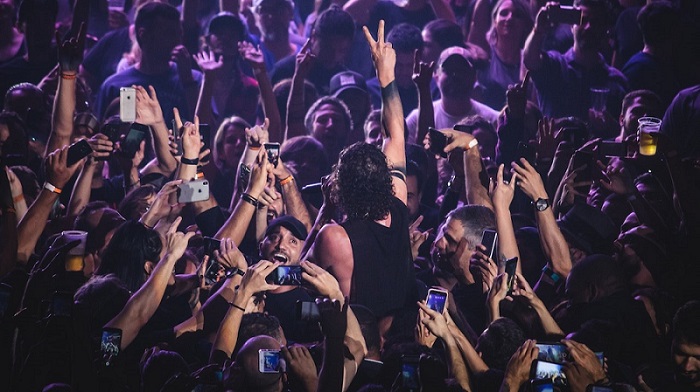
One thing you could do is engage your audience, meaning, give them something to do.
Plan songs that they can sing along to mid-setlist. You can opt to cover a popular song by a bigger artist too.
Either way, the songs on your setlist should flow seamlessly and the best way to do this is to keep the audience’s needs in mind.
Mix in Old and New
While small artists see their events as an opportunity to play their new singles, it may disrupt the rhythm of the whole show.
Your set needs songs that are familiar to your fanbase and aren’t just a big promo for your upcoming album.
In other words, you’d want to mix up your setlist with both old and new songs. Just remember to talk your audience through it so you don’t lose them in the end.
If you don’t have songs in the making, consider changing the arrangements of your current songs for a fresher take.
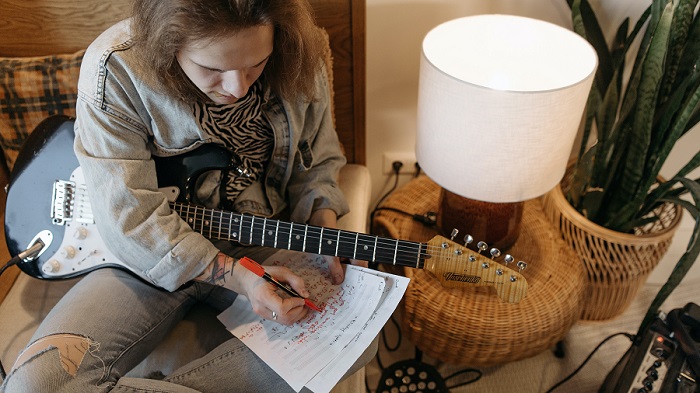
Another tip you could keep in mind is improvisation.
You can plan ahead to play around with a popular solo or put on an acoustic version of your fan’s favorite song.
Include, of course, tracks that have performed well in the past too.
A good rule of thumb is to avoid playing new songs during small gigs.
How you decide on your setlist’s songs will entirely depend on your band’s genre; just think about how long your set is too.
Mixing it up also includes not doing the same set of songs every show. Remember: variety is a constant in the music industry.
End With a Bang Too
Much like your set should start off with a bang, it should end with one too.
Creating an eventful first impression isn’t enough, but leaving the audience with a memorable finish makes up for it.
Many renowned artists put their most popular tracks towards the end of their setlist.
While that may do well by big names, such as Beyonce or Grande, you’ll find that with smaller artists, it’s not the same.

What you want to do is have your set end with a statement that speaks for you and your band.
It’s your last chance to engage with your audience and keep that bond going. It’ll also be a good time to insert another guitar or drum solo.
A great ending may lead to an encore as well. A crowd requesting more time is almost a dealbreaker on how well the performance went.
Make sure that your setlist has extra songs in case this happens!
In other words, don’t be afraid to be overprepared. You don’t want your time to run over, but you shouldn’t leave your fans thirsty for more either.
Why Are Setlists Important?
Setlists are important because they help keep everything on track. From wardrobe to lighting, a lot goes into a live performance.
A setlist allows you to check off big questions like: what are we going to play and is the show going to end well?
Additionally, you can collect performance royalties by writing down and submitting your setlist.
This means that you earn money off other people who end up performing your songs live later on.
On a more sentimental level though, setlists are a memorable piece that becomes valuable for both the artist and their fanbase.
Setlists are typically looked back on as a treasure and as we’ve mentioned before, they sometimes get auctioned off at high prices too!
